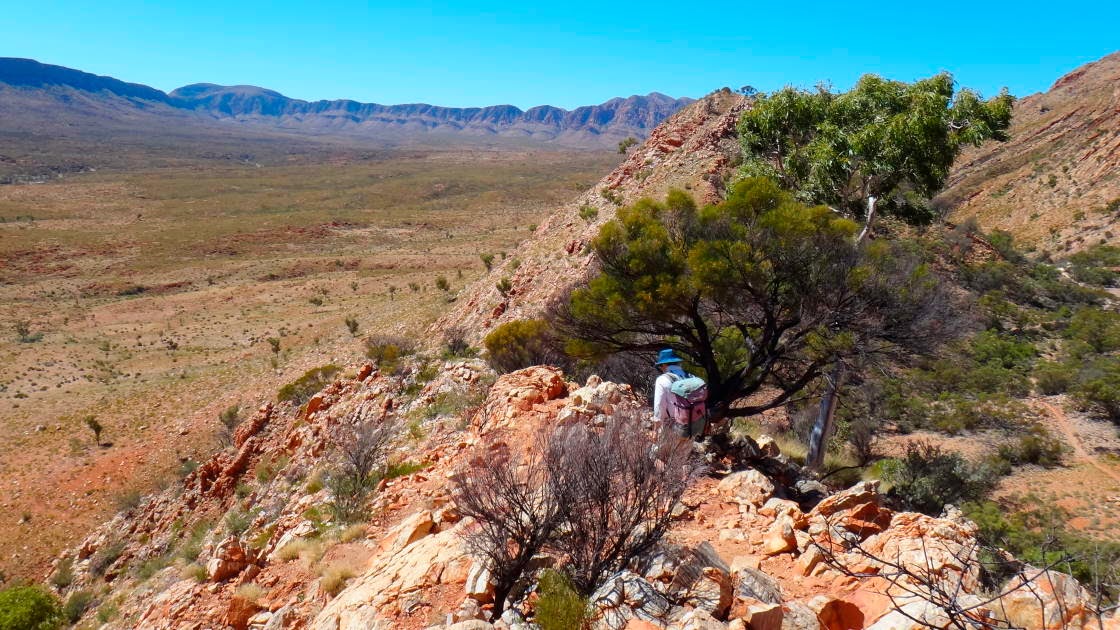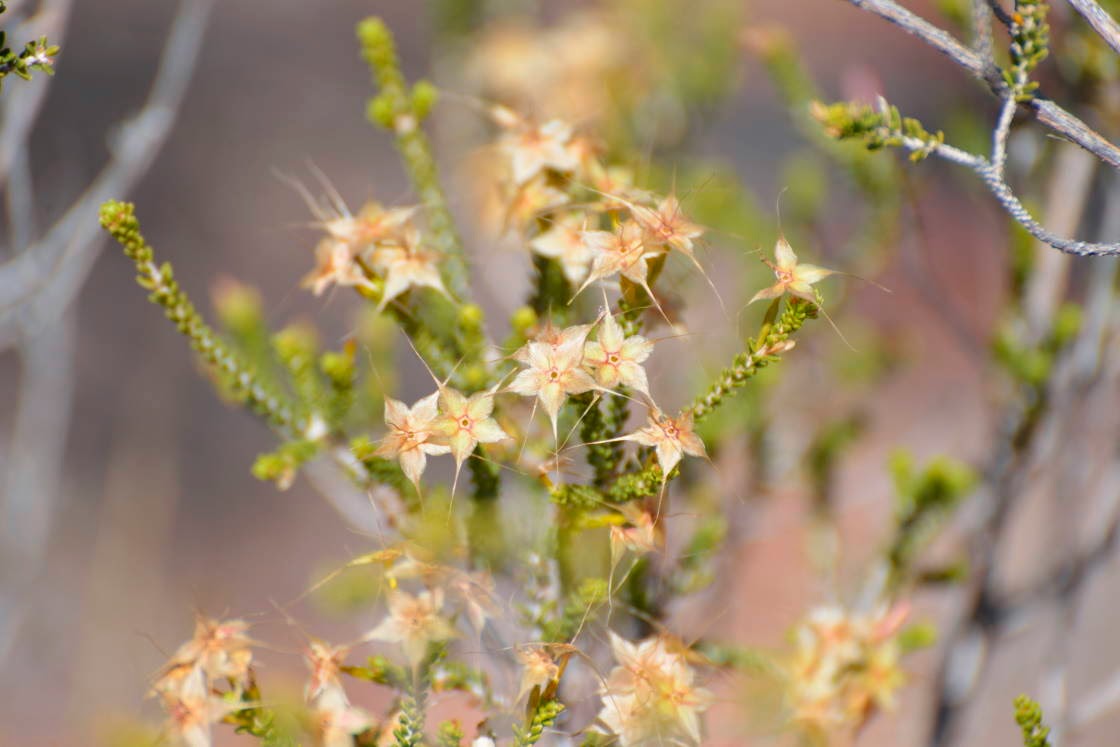The Ormiston Pound walk is one of our favourite bushwalks and it was just as spectacular as last time! Red, orange and purple rocks with white-barked ghost gums and many wildflowers! Kirsten at our lunch spot on top of the range with a great view into the pound (below with me walking into it).
Ghost gums can grow in the most precarious locations!
Spinifex growing between purple/yellow rocks.
The Finke River has nine permanent waterholes where it gouged its way through the mountain ranges. These sources of freshwater are very important to Aboriginal people, as well as flora and fauna. Below is Redbank Gorge with very little water and....
.... Glen Helen Gorge.
We camped on the Finke River, which is mostly a dry sandy creek bed. Not a bad view first thing in the morning!
Mount Sonder is the last section of the 223km long Larapinta Trail. The walking trail can be seen below leading along the ridge to the summit (1,380m).
The aquatic fern below is Nardoo, which is an important food source for the local Aboriginals. The spore cases are roasted, ground and mixed with water to form a thin paste. If the spores are not roasted (as by Burke and Wills), an enzyme makes Vitamin B1 unavailable to the body. Vitamine B1 is essential for energy metabolism, nerve and brain function and a deficiency causes a fatal disease known as Beri-Beri. Perhaps if Burke and Wills had watched the locals more carefully, they might have survived to become the first white men to cross the continent from south to north. Anybody not familiar with the story of Burke and Wills, should read "The Dig Tree" by Sarah Murgatroyd. Another amazing story of Australian explorers!
Newhaven Wildlife Sanctuary is run by AWC (Australian Wildlife Conservancy) and contains 23 ecosystems, including spinifex sand plains, salt lakes, bloodwoods, dune fields and stands of majestic desert oaks. The salt lake below is covered with odd looking salt tolerant samphire.
Below is Kirsten taking a photograph of Lake Bennett from a sand dune.
Spinifex always seems to make photographs look blurry!
Desert oaks on red sand in the evening light! The photograph does not do it justice!
Our second loop was along the East MacDonnell Ranges, then north on the Binns Track to Davenport Range National Park and past Devils Marbles Conservation Reserve.
Trephina Gorge National Park is an important habitat for the threatened Black-footed rock wallaby (Petrogale lateralis).

Bearded dragons seem to like the heat of sealed roads and they are not very fast at moving out of the way!

The Devils Marbles are large boulders that form the exposed top layer of an extensive granite formation. The natural processes of weathering and erosion have created the various shapes of the boulders. They are just amazing!

I had to climb into this one to show the scale. Note the smooth surface where it snapped in two.
This is why a lot of people install a tyre pressure monitoring system in their 4WD! The cause of this blow-out was most-likely an undetected, slow leak in the tread. This created a pressure drop, which lets the tyre flex more and builds up heat in the process.
Our car has a range of approximately 700 kms, which is often not enough in the outback, so we always carried extra.
This is our standard breakfast: oats with nuts, yogurt, milk and fruit....
... and one of our favourite dinners: red vegetable curry.
Spinifex pigeons and Zebra finches were our constant companions in the Central Desert.
We didn't see many reptiles, maybe it was too early in the season. This Long-nosed Dragon (Gowidon longirostris) was one of the few.
For my botanist friends: some more flowers (and bush tomatoes). Some of these desert flowers are so tiny and delicate!

































No comments:
Post a Comment